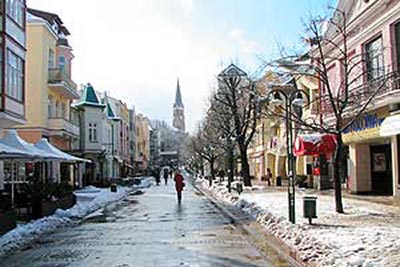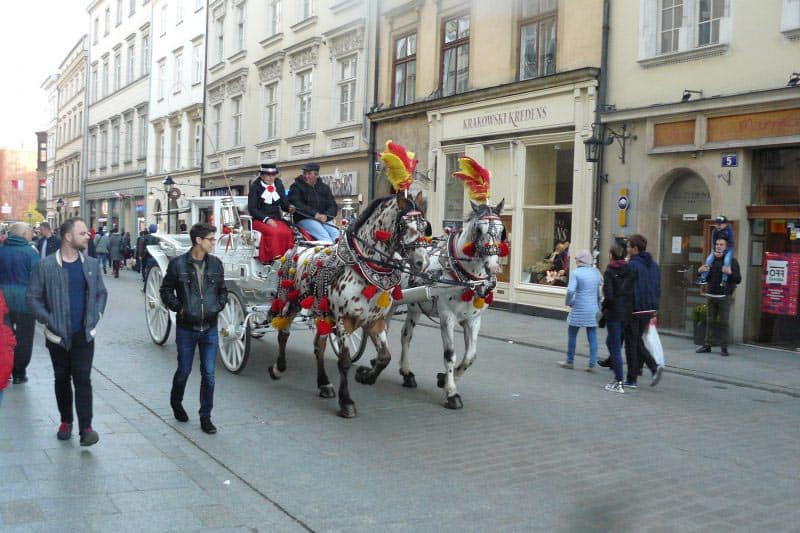
In Wroclaw, It’s the ‘Little Things’ that Set this Polish city Apart
By Barbara Redding

Some destinations capture your imagination with towering skyscrapers, prestigious art museums, or Michelin-starred restaurants.
In Wroclaw, what drew my attention were little things—lots of them—all shaped like dwarves or krasnale in Polish.
More than 1,000 bronze statuettes reside in doorways, atop bridges, and on street corners across this vibrant city in southwestern Poland,
Some made me laugh like the dwarf riding a Vespa. Others encouraged reflection, such as the dwarf with a big heart helping children in neighboring Ukraine. Most, well, just made me smile.

Hunting for Dwarves
I joined the hunt for the whimsical gnomes on a recent visit to Wroclaw (pronounced VROTZ-waf). Now the city’s symbol, the dwarves honor a protest movement that helped topple Poland’s communist regime in the late 1980s.
While strolling the cobblestone streets of Poland’s third-largest city, I was also enchanted by its more prominent attractions.
The Rynek in Wroclaw’s charming Old Town is one of Europe’s largest and liveliest market squares. Beer halls, jazz clubs, and cafes surround the pedestrian-only square, making it an entertaining place to stay and stay out late.
Wroclaw is a Mix of Gothic and Contemporary Architecture
Grand Gothic churches, contemporary art museums, and a Japanese botanical garden also draw visitors to the city of about 675,00 people. Sometimes called “Poland’s Venice,” Wroclaw is crisscrossed by several rivers and connected by more than 100 bridges. One of the best ways to see the city is aboard a paddlewheel boat, a solar-powered catamaran, or a kayak, especially on warm summer nights.
 I began exploring Wroclaw on a walking tour of Old Town. My knowledgeable guide, Arkadiusz Förster, introduced me to my first dwarf—a guitar-wielding rock-star gnome.
I began exploring Wroclaw on a walking tour of Old Town. My knowledgeable guide, Arkadiusz Förster, introduced me to my first dwarf—a guitar-wielding rock-star gnome.
An art history major, Förster also pointed out the city’s defining art and architecture while recounting its history as a major trading city in the Middle Ages to becoming a prosperous university town and technology center today.
Founded more than a millennium ago, Wroclaw, like much of Poland, has been claimed by several European empires.
City Once Part of Germany
Known as Breslau, the city was part of Germany from the 1870s until the end of World War II. Nearly destroyed in one of the war’s last battles, it was reunited with Poland in 1945, and its Polish name, Wroclaw, was restored.
 The arduous process of reconstruction began under the Soviet Union’s thumb as Poland fell behind the Iron Curtain.
The arduous process of reconstruction began under the Soviet Union’s thumb as Poland fell behind the Iron Curtain.
As people throughout Poland chafed under authoritarianism in the 1980s, a Wroclaw anti-communist group protested by painting dwarves around the city.
The Orange Alternative’s mischievous dwarves became the symbol of opposition to communist rule, which finally ended in 1989.
Dwarves Reappear in the 2000s
Dwarves reappeared as statues in 2001 to commemorate the Orange Alternative’s role in the country’s struggle for democracy.
“They’ve been constantly reproducing ever since,” Förster joked, pointing out cheeky gnomes as we strolled through Old Town. Made of bronze by local sculptors, each dwarf has a name and a distinct personality.
Together, the legion of littles has inspired a children’s game with stickers, a dwarf website, and an annual dwarf festival held in September.

Gothic Town Hall Dominates Market Square
When not preoccupied by gnomes, I also found time to admire Market Square. Bright-colored tenement buildings with stair-step roofs rise above outdoor cafes, coffee shops, and retail stores. Jugglers, musicians, and balloon sellers compete with food stalls and souvenir vendors for attention.
Looking down on the busy square is the Old Town Hall, an ornate Gothic behemoth that looks more like a fairy-tale castle than a government building.
Medieval gables, stone sculptures, and intricate latticework, some of which date back to the 12th century, adorn the building, which is now a museum.
Cathedral Towers Rise above Old City
From Old Town, it’s a short, scenic stroll to Ostrów Tumski, or Cathedral Island, the oldest part of Wrocław.
Though it is no longer an island, the best way to get there is via a pedestrian bridge, known as the Lovers Bridge, over the Oder River. (I spied a dwarf there, too.)
The twin towers of the Cathedral of St. John the Baptist loom over Cathedral Boulevard.
The church’s ornate Gothic interior is worth the small admission price. A lift takes visitors to the top for panoramic city views.
At dusk, a mysterious figure in a cape and top hat stalks the streets lighting the island’s 19th-century gas lamps. (A dwarf lamplighter resides on a street corner.)
Jewish Synagogue a Symbol of Hope

In the Four Denominations District, I visited the White Stork, the only Jewish synagogue that survived World War II. Now restored, the synagogue is a reminder of the past but also a sign of hope. The area is also known as the District of Mutual Respect and includes Orthodox, Roman Catholic, and Evangelical churches.

Not all of Wroclaw’s architectural treasures are in Old Town. A short taxi ride away, Centennial Hall is a concrete-domed UNESCO World Heritage site built in 1913. Designed by noted German modernist architect Max Berg, the hall faces a massive fountain whose dazzling light, sound, and water show commemorates the first free elections in post-war Poland.

After catching the multimedia show, I wandered through the city’s tranquil Japanese garden before visiting the Four Domes Pavilion, a thought-provoking museum of contemporary Polish art.
Where to stay: Wroclaw offers a range of options, from brand names to boutique hotels. By staying at the historic Art Hotel in Old Town, I could walk to most attractions.
The 80-room boutique hotel opened in the 1990s in two 16th-century Renaissance tenements.
The hotel retained some wood-beamed ceilings and iron doors while adding eclectic local art to spacious public areas and guest rooms.
Where to eat in Wroklaw:
 Pierogies are a mainstay on most menus, and I’m not complaining. I fell in love with Polish food in Wroclaw, but I was especially impressed with the chefs who added a fresh touch to traditional and international dishes.
Pierogies are a mainstay on most menus, and I’m not complaining. I fell in love with Polish food in Wroclaw, but I was especially impressed with the chefs who added a fresh touch to traditional and international dishes.
Old Mill Pierogarnia serves pierogies stuffed with every imaginable ingredient.
I mixed oven-baked with traditional boiled pierogies containing savory and sweet fillings and topped with assorted sauces.
Chef Małgorzata Karkocha at IDA Kuchina and Wine Bar fills her dumplings with duck confit, cranberries, and horseradish.
Then, she tops them with cream and fresh herbs, creating a sensational combination of flavors.
My favorite dish was a pistachio soufflé, oozing with chocolate and nuts and served with lemon sorbet.

I enjoyed an elegant dinner on the riverfront at La Maddalena. While observing passing boats, I savored ceviche made of scallops, grapefruit, and yellow beets. The main course was equally innovative: sea bass in a curry sauce served with potato gratin and fennel with apple slaw.
Wroclaw may not be as well-known as bustling Warsaw and picturesque Krakow. However, the city is gaining wider attention from Europeans and international travelers. And not just because of its boot-sized dwarves.

Barbara Redding is a freelance travel writer based in Austin, Texas. A retired journalist, she loves to explore new destinations and revisit familiar places. She’s written about finding the world’s largest statue of Jesus in Poland, a Hindu wedding in India, snorkeling in Cuba’s Bay of Pigs, and saving sea turtles in Jamaica.
- Wroclaw Poland: A City Full of Dwarfs - September 25, 2024
- Hoi An–A City Frozen in Time - September 19, 2024
- Arezzo, Tuscany: A Stunning Find - September 3, 2024






